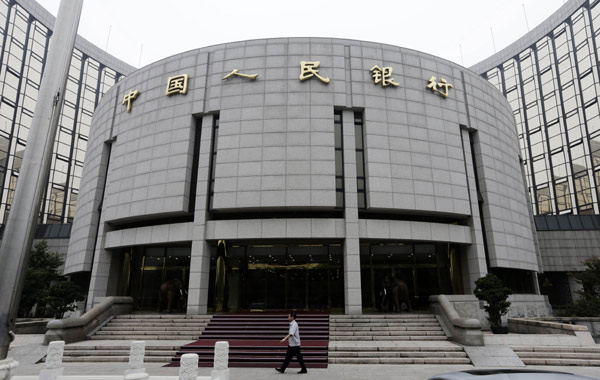

|
 For a long time, an implicit deposit insurance policy has existed based on governmental credit guarantees provided via the People's Bank of China, the country's central bank. [Photo / Provided to China Daily]
|
Deposit insurance is considered to be a highly important mechanism to prevent bank runs and to boost depositor confidence. China is the only major economy in the world that has yet to introduce deposit insurance legislation after 111 countries and regions have already done so.
With the marketization of financial fields in China, establishing an explicit deposit insurance plan must be seriously considered by the central government.
For a long time, an implicit deposit insurance policy has existed based on governmental credit guarantees provided via the People's Bank of China, the country's central bank.
A good example was the takeover of Hainan Development Bank, a local mixed-ownership bank in Hainan province. After the real estate bubble burst in Hainan in the 1990s, Hainan Development Bank could not recover all of its loans - a large number of depositors took their savings to other State-owned banks starting from the spring of 1998.
The 3.4 billion yuan ($557 million) emergency aid package from the PBOC was not enough, and on June 21, 1998, the central bank had to announce the closure of Hainan Development Bank.
In the period from 1997 to 1998, the PBOC closed another 41 problematic financial institutions, mainly local urban or rural credit cooperatives. According to an academic calculation, reconstruction of the banking system cost China about 1.5 trillion yuan in the 1990s, accounting for 30 percent of the country's GDP in 1999. The implicit deposit insurance policy in China was a very expensive one.
Based on those lessons, and to mitigate the impact of an unexpected financial crisis, some consensus was reached indicating that a fully and effectively functioning deposit insurance plan with appropriate powers and responsibilities should be established to exert a positive impact on protecting depositor interests, safeguarding public confidence and stability, and improving a market-based exit mechanism for financial institutions.
 Robots kick off football match in Hefei
Robots kick off football match in Hefei
 Aerobatic team prepare for Aviation Convention
Aerobatic team prepare for Aviation Convention
 China Suzhou Electronic Manufacturer Exposition kicks off
China Suzhou Electronic Manufacturer Exposition kicks off
 'Squid beauty' and her profitable BBQ store
'Squid beauty' and her profitable BBQ store
 A day in the life of a car model
A day in the life of a car model
 Vintage cars gather in downtown Beijing
Vintage cars gather in downtown Beijing
 Asia Bike Trade Show kicks off in Nanjing
Asia Bike Trade Show kicks off in Nanjing
 Student makes race car for 4th Formula SAE of China
Student makes race car for 4th Formula SAE of China